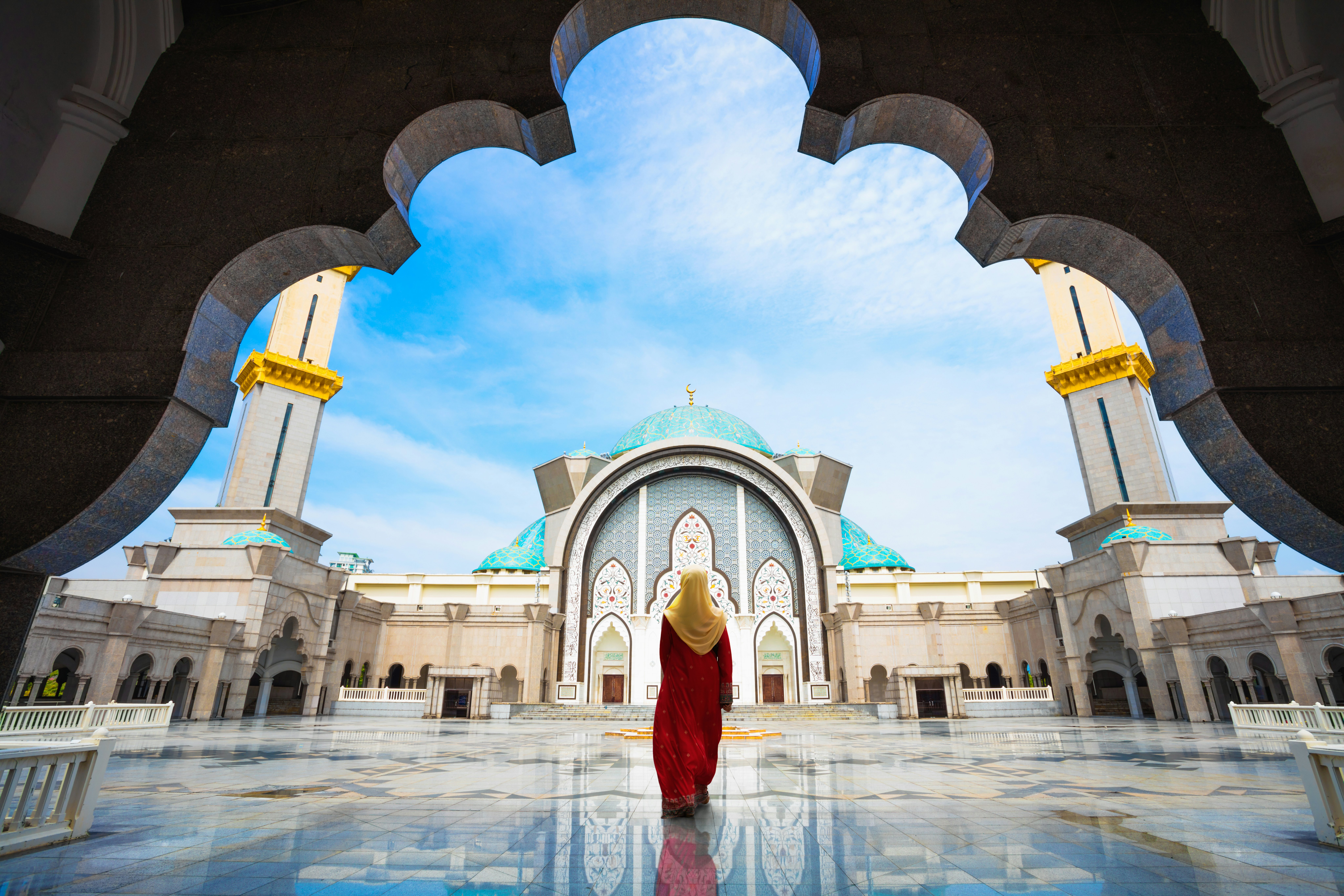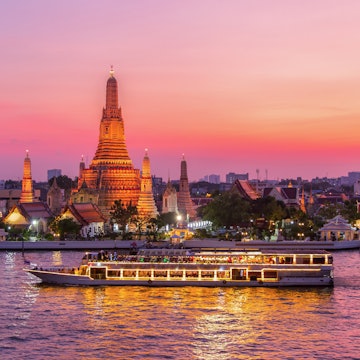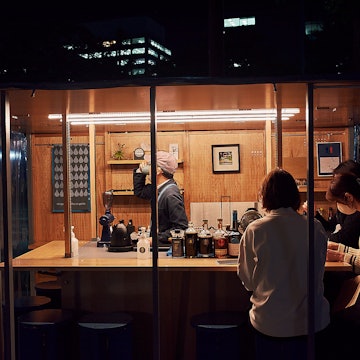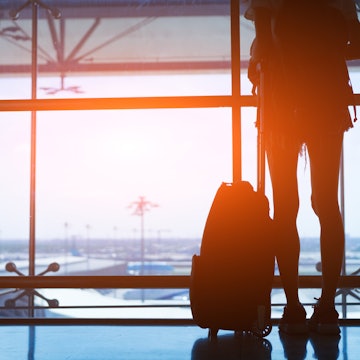

It's easy to experience the beauty of Malaysia on a budget with our insider tips. Matteo Colombo/Getty Images
Generations of curious travelers have donned a rucksack and headed to Southeast Asia to experience new cultures and fun times on a tight budget. Though Thailand, Vietnam and Cambodia continue to be popular with this cash-strapped crowd, Malaysia has been somewhat overlooked.
This is largely to do with its reputation as the expensive part of the region but that's an unfortunate misconception. Though the prices may be slightly higher than its neighbors, the relatively small difference is amply reflected in Malaysia's impressive infrastructure, even in rural areas.
Malaysia represents fantastic value for money at almost all levels. Costs for food, lodging, fuel and internal transportation are very reasonable, and alcohol is one of the only items that will make a hefty dent in your wallet.
For exciting adventures without the price tag, here’s how to visit Malaysia on a budget.
Daily costs in Malaysia
Hostel room: RM44–95 Malaysian ringgit (US$9.50–20)
Basic room for two: RM100–140 (US$23–32)
Vacation rentals: RM175–350 (US$40–72)
City bus or train ticket: RM2–6 (US$0.45–1.40)
Long-distance bus ticket: RM50–150 (US$11.40–34)
Noodles at a hawker stall: RM6 (US$1.37)
Bottle of beer at a bar or restaurant: RM20–45 (US$4.50–10.30)
Budget airlines offer bargain fares but there are additional fees
While short hop flights have sustainability issues, they are currently the only means of crossing between Peninsular Malaysia and East Malaysia (Borneo), which are separated by hundreds of miles of sea. Budget carriers such as Air Asia, Batik Air and Firefly offer cheap flights throughout Malaysia, as well as international hops to other hubs in Southeast Asia, but watch for hidden extras.
Fares are advertised with rock bottom prices on the internet – if you book well in advance, a domestic flight can cost as little as US$30 – but remember that these prices don’t include taxes, airport fees or checked luggage. This tends to be a bigger issue for international routes; airport fees for domestic flights tend to be fairly modest – for example, RM11 (US$2.50) for flights leaving from Kuala Lumpur.
Travel by bus when you can
If you’re staying in either Peninsular Malaysia or East Malaysia and don't plan to visit the other half of the country, you can get almost anywhere you need to go by bus. There are dozens of operators, which makes for competitive pricing and a good chance of getting a seat, even if you just show up at the station. English is widely spoken in Malaysia, and Bahasa Melayu (Malaysian) is written in the Roman alphabet, which makes navigating timetables easier.

Get to Malaysia's islands by ferry
Sure, you can fly to Malaysia's tropical islands, but there’s still a little romance in taking a ferry to destinations such as Langkawi and Penang. And if the nostalgia of traveling by sea isn’t enough, it’s also cheaper and better for the planet. The ferry to Langkawi costs RM60 (US$14) – a fraction of the cost of arriving by air – while the old-fashioned car ferry to Penang costs just RM1.20 (US$0.30). In fact, Penang offers savings all-round as it's closer to the mainland and less oriented towards beach tourism.
Opt for public transport over a taxi to and from the airport
If you fly into Kuala Lumpur, the fastest way into town is the zippy KLIA Ekspres, an air-conditioned train with onboard wi-fi that takes you from Kuala Lumpur International Airport to KL Sentral station in just 30 minutes. A ticket will cost RM55 (US$12.55), a big saving on the cost by taxi. The cheapest option is the air-conditioned Express Coach bus, which takes 45 minutes to an hour to reach the center of KL (sometimes longer, depending on traffic), and costs just RM10 (US$2.30).
In other cities, your choices may be limited to taxis (faster, more expensive) or buses (cheaper, but invariably slower, so there’s the inconvenience factor). Summoning a rideshare on a local app such as Grab or inDrive may get you a cheaper fare heading out to the airport.
Save money when you're getting around town
Rates for a metered taxi ride in Malaysia are very reasonable, though drivers have a reputation for being reluctant to use the meter. However, even those prices are undercut by using Grab, the Southeast Asian do-everything app that also provides Malaysia's most popular rideshare service. With reliable internet access across the country, Grab functions in all major cities and plenty of smaller hubs.
Alternatively, stick to local buses and urban mass transit networks. Kuala Lumpur's LRT and MRT urban rail services are air-conditioned and can get you to most sights in the center for just a few ringgit – see their websites for route maps, prices and timings.

Time your visit to stretch your budget to the max
The low season in Malaysia comes with a precipitous drop in travel costs, though sometimes also with a fair amount of rain. The trick is figuring out the low season for the part of the country you're visiting. Peninsular Malaysia sees a drop in visitor numbers from March to June, while Malaysian Borneo’s low season lasts from October through to March.
However, note that there are small spikes in tourism during Singapore’s school holidays beginning in May or June, and the Malaysian school breaks in March, May, August, and late November through early December. Some beach and island resorts shut down completely down during the rainy season; check things are open before heading to the coast in November and December and from March to May.
Explore on foot for free
There’s a lot to be said for exploring on foot in historic areas such as Chinatown in Kuala Lumpur, Jonker Walk in Melaka City, George Town in Penang and the city center of Kota Kinabalu. A walk is a chance to admire historic architecture, sip coffee in Chinese-run kopitiam (Malay-style cafes), visit colorful temples, clan-houses and mosques, and drift around streets lined with nostalgic Malay shophouses. It's a great way to get a sense of the impressive diversity that is Malaysia’s most attractive asset.
Eat for less and be merry…
Malaysian food is budget-friendly, plentiful and delicious. Dining out in Malaysia is not just fiscally prudent, it’s the best way to dive into the culture and history of a nation that stands at the crossroads of China, India, and dozens of Southeast Asian maritime kingdoms. If you eat at establishments targeting locals rather than tourists, you'll be hard-pressed to pay more than RM80 (about US$18.25) for three meals a day.

Go teetotal to save money in Malaysia
In this majority Muslim nation, the sale of alcohol has long been a political issue. Although non-Muslims are permitted to buy alcohol, high excise taxes are the price of being able to drink in Malaysia. With these taxes included, beer, wine, and spirits can cost as much as they do in the US and Western Europe. To keep your costs down, stick to juices, soft drinks, fresh coconut water, coffee or teh tarik (sweet tea with condensed milk).
Eat like a local at hawker stalls
Outside of some high-end places in cities such as Kuala Lumpur and George Town, restaurants in Malaysia are not particularly expensive. However, you’ll find much cheaper food, and often better gastronomic quality, if you eat at hawker centers and kopitiam.
Government-licensed conglomerations of street food stalls can be found throughout Kuala Lumpur, Melaka, Penang, Kota Kinabalu, Kuching and other major (and minor) cities. They're particularly common at transport hubs and in shopping areas. Old school kopitiam serve small cheap eats as well as Malay-style coffee, and many specialize in a single dish; if in doubt, just order what everyone else is having.
Dine out at night markets
Major international fast food chains can be found throughout Malaysia, and while they’re a little cheaper than back home, they’re more expensive than eating local Malaysian food. Instead, head to the nearest pasar malam, or night market, for an evening meal. These nighttime streetside hawker markets come with drink stands too, and family-friendly entertainment in the form of karaoke.
The point for most visitors though is the food, which is invariably cheap and delicious. The night market in Kota Bharu, way off the tourist track in Kelantan, is a standout example of the genre, but the better-known night markets in Kuala Lumpur and Penang are also justifiably famous.

Immerse yourself in local culture during major festivals
With multiple religions feeding into Malaysia's rich cultural melting pot, festivals kick off in Malaysia every month of the year, and they offer a fascinating window into the culture of the country. January is a particularly good month for celebrations – some years, the month sees both Chinese New Year (which can also occur in early February) and Thaipusam, an enormous Hindu celebration that is of utmost importance to Malaysia's largely Tamil Indian population.
August is another great festival month, with the George Town Festival celebrating Penang’s diversity, arts, and culture, and the Chinese Hungry Ghost Festival bringing color to Chinese communities across Malaysia.














